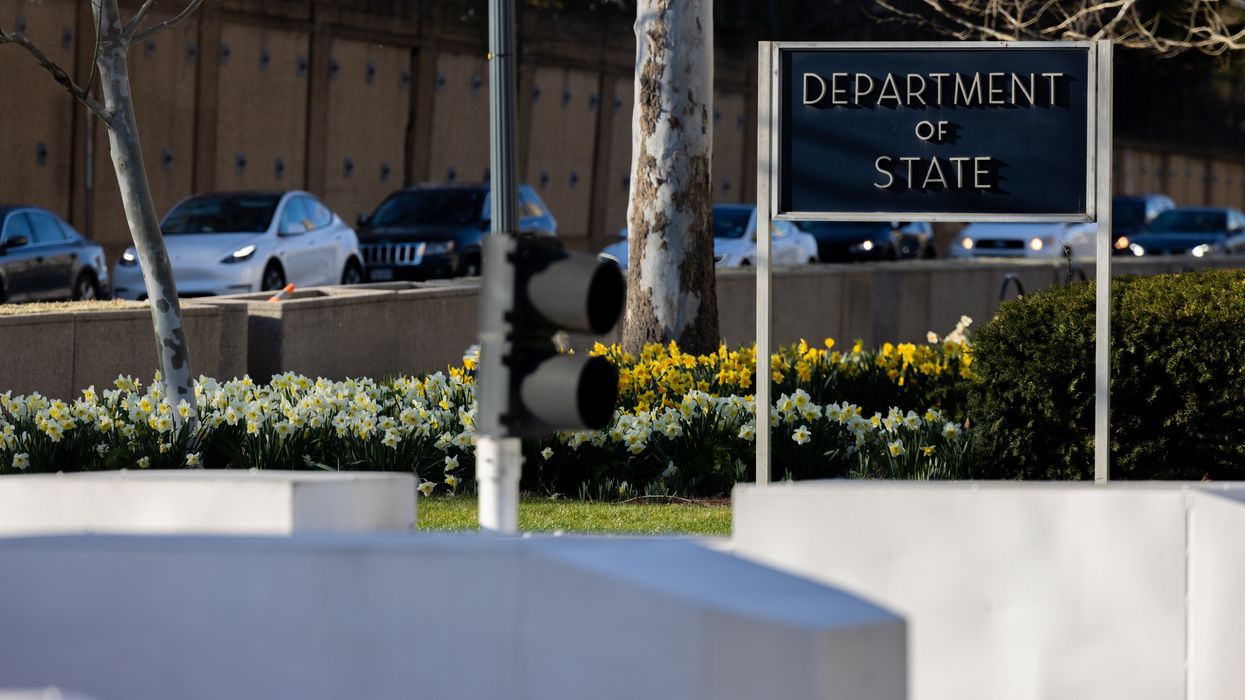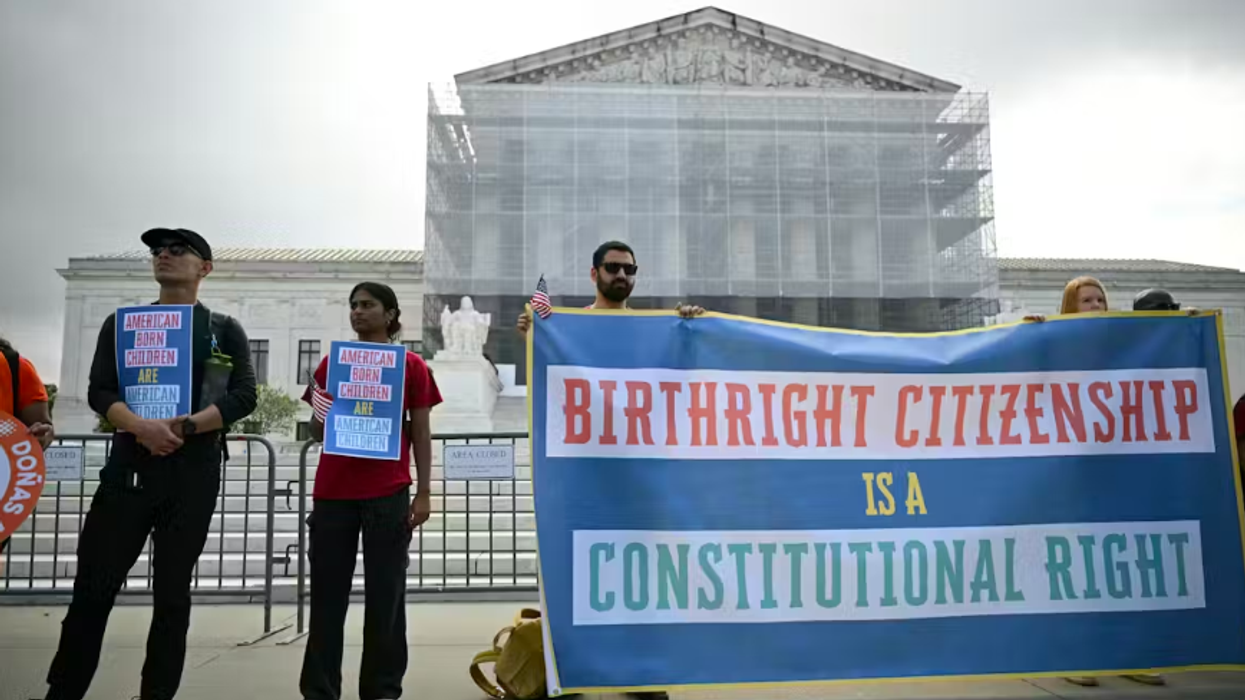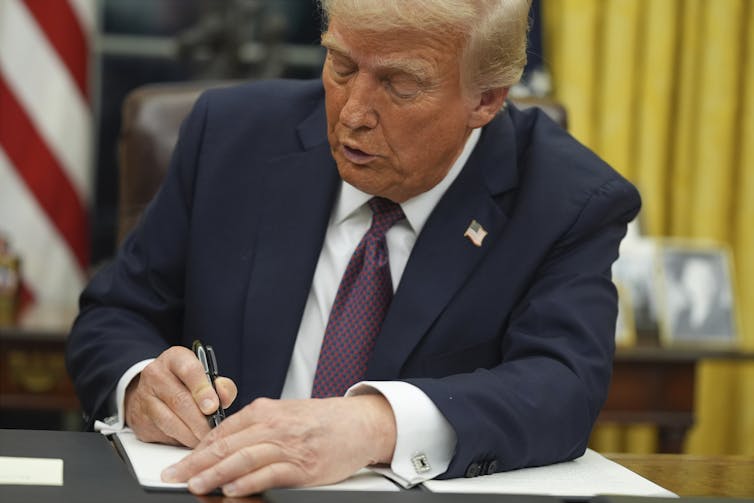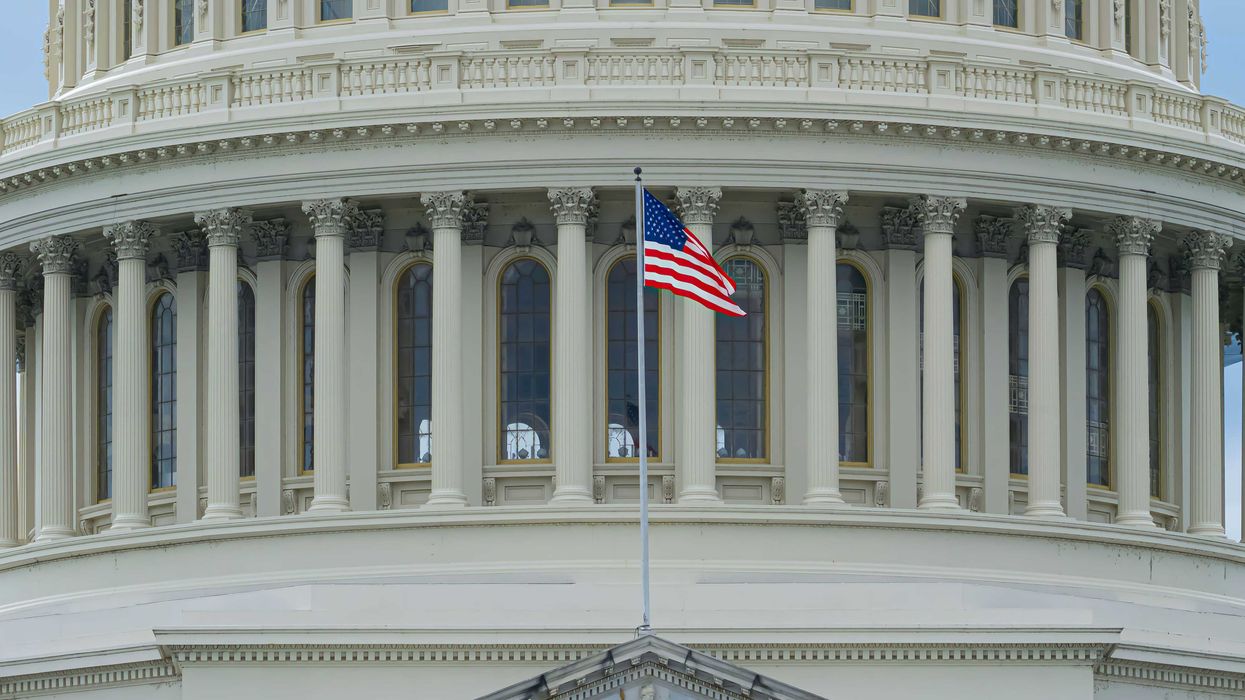Johnson was a career member of the Senior Foreign Service and is president of the Association for Diplomatic Studies and Training. This article is written in her personal capacity, not as a representative of ADST.
This is part of a series offering a nonpartisan counter to Project 2025, a conservative guideline to reforming government and policymaking during the first 180 days of a second Trump administration. The Fulcrum's cross partisan analysis of Project 2025 relies on unbiased critical thinking, reexamines outdated assumptions, and uses reason, scientific evidence, and data in analyzing and critiquing Project 2025.
The history of the Department of State, one of the first Cabinet departments established, is intimately linked to our nation’s history and reflects the importance attached to managing our relations with foreign governments. Created in 1879, it is the bureaucratic home for two distinct cadres of nonpartisan career employees, under two congressionally mandated systems — the Foreign Service (FS) Schedule and the Civil Service (GS) General Schedule.
Foreign Service officers receive presidential commissions, and both cadres take an oath to uphold the Constitution. As career public servants, both are loyal to the presidency. Strengthening these career services rather than weakening them is critical in today’s complex, interdependent world, where managing relations and containing conflict are more important than ever.
Chas Freeman, one of our most articulate practitioners and writers on the art of diplomacy, explained the importance of a professional, nonpartisan diplomatic service:
“Diplomacy contributes to national well-being by exploiting unforeseen opportunities to advance state interests or reducing wasteful defense spending through détente, arms control, or disarmament accords. A great deal of diplomacy consists of ensuring that the natural frictions inherent in relations between states and peoples are minimized and restrained, that needless confrontations and blunders into warfare are avoided, and that when war does occur, its scope and level of violence are appropriately contained. … Diplomatic dialogue is the key to the fashioning of strategic relationships and the management of conflicting interests with foreign governments.”
Project 2025, the conservative Heritage Foundation’s blueprint for a second Trump administration, provides its own vision of American diplomacy and management. The chapter on the State Department — written by Kiron Skinner, who served as director of the Office of Policy Planning and as senior policy adviser to the secretary of state under Donald Trump — needs to be read in the context of the entire report. It rests on two main ideas: 1) the need for many more political appointees (vetted by Heritage for ideological conformity), and 2) the need to restructure and streamline the department to implement the president’s foreign policy agenda/vision.
In 1924, the Rogers Act established the United States Foreign Service as a professional, nonpartisan career cadre and the institutional backbone of the U.S. diplomatic service. Congress updated the legislation in 1946 and again with the 1980 Foreign Service Act, stipulating that “a career Foreign Service characterized by excellence and professionalism is essential to the national interest and must be preserved, strengthened, and improved to carry out its mission effectively in response to complex challenges of modern diplomacy and international relations.” Are not these challenges even more complex today?
The first part of the chapter in Project 2025 focuses on the need to ensure loyalty to the president’s agenda by installing appointees with established partisan credentials. The second part addresses the president’s foreign policy priorities. The third part covers reorganization strategy, consolidating foreign assistance and making public diplomacy “serve American interests.” I will focus on the first and third parts and then briefly comment on the foreign policy agenda.
Skinner highlights “one significant problem that the next President must address to be successful,” namely, a “tug-of-war between Presidents and bureaucracies,” asserting that “resistance is much starker under conservative Presidents” because “large swaths of the State Department workforce are left-wing and predisposed to disagree with a conservative President’s policy agenda.” No supporting examples are given. This statement misdiagnoses the reasons for the perceived “tug-of-war.” For career professionals, personal political leanings are not relevant to diplomatic practice or implementing foreign policy. Their job is to provide advice based on professional knowledge and experience and to implement whatever policy decision the political leaders make. Nonpartisan loyalty to the administration is the rule. Internal dissent or resignation over policy disagreement is rare.
In the subsection “History and Context,” Skinner states, “A major, if not the major, source of the State Department’s ineffectiveness lies in its institutional belief that it is an independent institution that knows what is best for the United States, sets its own foreign policy, and does not need direction from an elected President.” This may well be a perception in some quarters but does not accurately characterize the State Department I experienced.
The subsection “Political Leadership” proposes significantly expanding the number of political appointees and installing them without waiting for confirmation. This proposal harks back to the pre-1883 Pendleton Act era, doubling down on partisan patronage rather than on increased professionalism and expertise in service to elected leadership and presidential foreign policy.
The section “Shaping the Future” opens with the proposition that before developing a foreign policy “grand strategy” one must address structural reform and streamlining. It cites an earlier commission’s observation about the “ineffectual organizational structure in which regional and functional policies do not serve integrated goals” but doesn’t mention any of the subsequent reports and reform initiatives. Calls for restructuring have been made repeatedly over the decades since the report issued by that 1998 Hart-Rudman Commission on 21st Century National Security.
A better approach is a high-level bipartisan commission to examine institutional reforms that would best serve the demands of diplomacy today. Such a commission should include current and former members of the foreign and civil services, members of Congress, academics, and eminent personalities with understanding of foreign policy and diplomatic practice.
Finally, the section on the president’s foreign policy agenda posits “a world on fire” requiring heightened attention to several nations. Some pose “existential threats” to U.S. national security, others to “our economy”, and some “wild cards” are identified as China, Iran, Venezuela, Russia and North Korea. The overall mindset conveyed by this section –– “either you are with us or against us” — seems to be the underlying principle. Better would be George Shultz’s call to work for broad consensus on national security, framed by shared values. Shultz lamented the loss of nonpartisanship in our foreign policy and emphasized the dominant role that “earned trust” plays in determining cooperation or conflict in relations between and among nations. The most important first step would be to heed his call.
More articles about Project 2025
- A cross-partisan approach
- An Introduction
- Rumors of Project 2025’s Demise are Greatly Exaggerated
- Department of Education
- Managing the bureaucracy
- Department of Defense
- Department of Energy
- The Environmental Protection Agency
- Education Savings Accounts
- Department of Veterans Affairs
- The Department of Homeland Security
- U.S. Agency for International Development
- Affirmative action
- A federal Parents' Bill of Rights
- Department of Labor
- Intelligence community
- Department of State
- Department of the Interior
- Federal Communications Commission
- A perspective from Europe
- Department of Health and Human Services
- Voting Rights Act
- Another look at the Federal Communications Commission





















